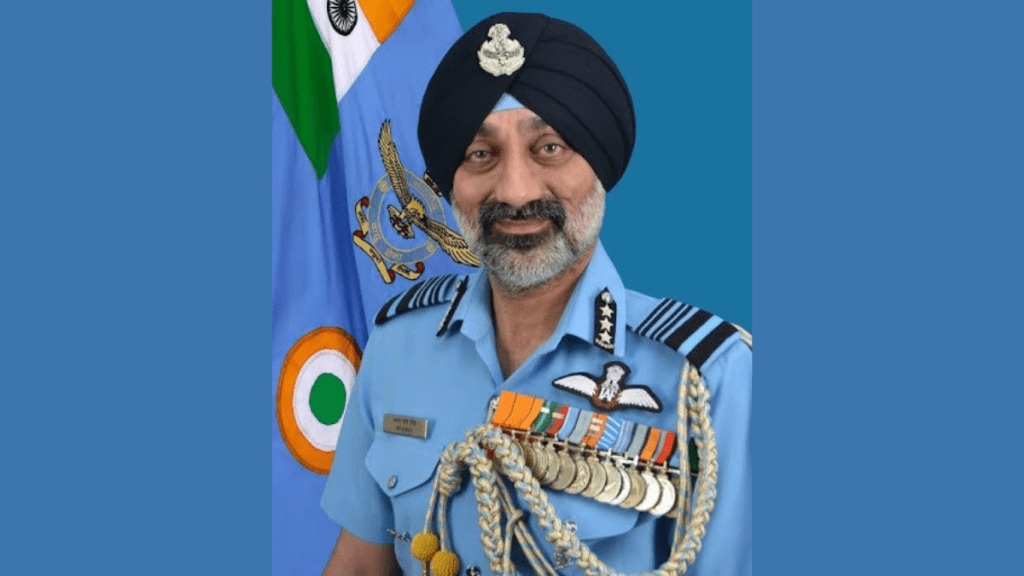Air Marshal AP Singh has taken charge as the new Chief of Air Staff of the Indian Air Force (IAF) during a critical juncture, inheriting a force grappling with strategic challenges and a pressing need for modernization. Singh’s appointment comes amid ongoing military confrontations with China and increasing concerns over the IAF’s diminishing fighter strength and delays in the induction of indigenous aircraft. With a career spanning nearly four decades and over 5,000 flight hours, Air Marshal Singh steps into the role with a wealth of experience but also faces urgent and complex challenges.
Fighter Strength: A Growing Concern
At the forefront of Singh’s agenda is reversing the depletion of the IAF’s fighter squadrons. The IAF currently operates only 30 fighter squadrons, far short of the 42 authorized to effectively counter potential threats from China and Pakistan. This gap is particularly concerning given China’s ongoing military buildup along the disputed border, where it has deployed advanced fighters, bombers, reconnaissance aircraft, and drones at key airbases.
Air Marshal Singh, a qualified test pilot who led the flight testing of the indigenous Tejas light combat aircraft, is fully aware of the need for rapid induction of these jets to address the shortfall. The IAF plans to induct around 300 Tejas variants over the next decade, but slow production rates at Hindustan Aeronautics Limited (HAL) continue to hamper these efforts. The delays in the Tejas Mark-1A, originally contracted in 2021, have compounded these issues, with engine supply disruptions and export blacklists affecting key components.
The challenge for Singh will be ensuring the faster delivery of the Tejas fighters while also balancing the need for the procurement of new multirole fighter aircraft (MRFA). The MRFA program, which aims to bring in 114 new combat aircraft, has been stalled for years, and its approval remains pending.
Enhancing Force Multipliers and Indigenous Development
Beyond fighter jets, Air Marshal Singh faces the task of pushing for more force multipliers, including mid-air refuelling tankers and airborne early-warning and control (AEW&C) systems. Currently, the IAF is operating with just six IL-78 refuelers, well below what is required to maintain the operational range of its fighters. Singh will also need to accelerate the development and induction of additional AEW&C systems, as the IAF lags behind even Pakistan in this crucial area.
The indigenous `Netra’ AEW&C systems are seen as critical for providing the IAF with “eyes in the sky,” but production delays have hindered progress. Singh must ensure that the Defense Research and Development Organisation (DRDO) delivers on the development of six additional Netra Mark-1A and six Mark-2 systems. The pressure to meet deadlines for these systems is growing as neighbouring nations continue to modernize their air forces at a faster pace.
Singh’s tenure will also see him overseeing the development of the Advanced Medium Combat Aircraft (AMCA), India’s ambitious 5th-generation stealth fighter program. This project is seen as essential for maintaining long-term air superiority in the region. Singh will need to keep the AMCA on track while simultaneously managing the ongoing upgrade of the Sukhoi-30MKI fleet.
Also, on the agenda is to take a decision regarding the Medium Transport Aircraft, the RfP for which is awaited.
Operational Efficiency and Jointness
As the new chief, Air Marshal Singh will also face increasing demands for greater jointness and theaterisation within India’s military, aimed at improving operational efficiency across all branches of the armed forces. These reforms, which involve creating integrated theater commands, are designed to optimize the use of resources and ensure faster decision-making in conflict situations. Singh’s leadership in these discussions will be vital in balancing the IAF’s priorities with the broader goals of India’s defense establishment.
Jointness will be particularly important as the IAF works to maintain a constant vigil along the northern borders with China. Several IAF bases are already operating with diminished fighter strength, and some have had to expand their areas of responsibility to ensure adequate coverage. Increasing the operational readiness of these bases while simultaneously addressing the fighter shortfall will require a delicate balancing act.
Bridging the Capability Gap
The urgency to modernize the IAF stems from the growing capability gap between India and its adversaries. Both China and Pakistan are rapidly inducting 4.5 and 5th-generation aircraft, leaving India at a disadvantage in terms of both numbers and technology. Air Marshal Singh has acknowledged this disparity, emphasizing that self-reliance in defence cannot come at the expense of national security.
To address this, Singh will need to ensure that India’s indigenous programs are not only accelerated but also meet the quality and performance standards required for modern warfare. This includes the development of beyond visual-range missiles, long-range air-to-surface strike capabilities, and the induction of more indigenous attack helicopters.
Bottomline
As Air Marshal AP Singh takes command of the IAF, his leadership will be tested by the urgency of addressing the force’s dwindling fighter numbers, slow procurement processes, and the growing threats along India’s borders. With a deep understanding of both operational and developmental challenges, Singh’s tenure will be defined by his ability to expedite modernization efforts and steer the IAF towards becoming a more capable, self-reliant, and future-ready force.


